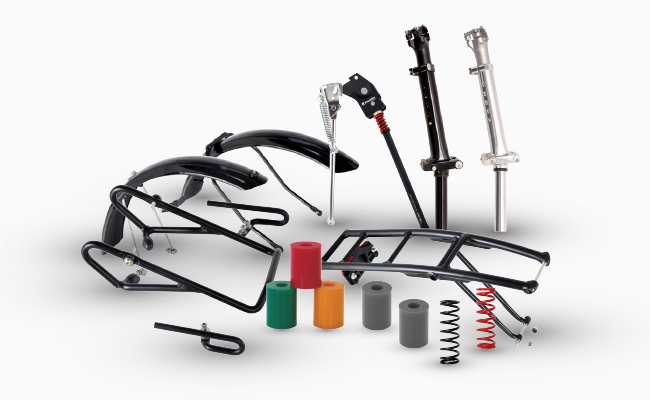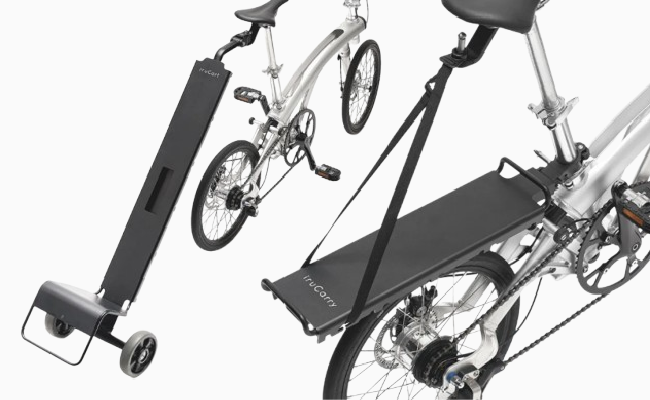
How much can you earn as a Food Delivery Rider?
Being a food delivery rider is a popular occupation in Singapore these days, largely because of the flexible nature of the job. You can decide when and where you want to work, and even choose what kind of delivery orders you want to take up.
There are cases where food delivery riders can earn as much as S$4000 per month. This definitely sounds tempting for a job with so much freedom, doesn’t it?
The 3 main food delivery companies in Singapore are GrabFood, Foodpanda and Deliveroo. Let’s take a look at what it’s like to be a delivery rider for each of these companies.
GrabFood
Nearly everyone in Singapore is familiar with the private car hire service, Grab. Their subsidiary food delivery service, GrabFood, is becoming just as popular.
GrabFood riders have the option to apply with a motorcycle, bicycle or a Personal Mobility Device (PMD). There is also an option to make deliveries by foot, but that will not help you to earn much unless in a heavily populated area like our Central Business District (CBD).
An advantage of being a delivery rider for GrabFood is you get flexibility with your schedules. They offer the most flexible work hours out of the three main delivery service companies in Singapore. There are no fixed shifts given by the company to follow. You can work as little as an hour per day. It is all up to you! Own time, own target!
Riders will also get paid daily instead of bi-monthly or monthly.
GrabFood Rider Pay
Source: GrabFood
Riders are paid on a per-delivery basis, with the delivery payment displayed at the top of each order. The base fare is $5 per trip, and surcharges will be added to that fee depending on the location and time. There are also incentives like the ‘Zone Boost’, which are given out based on the area that you’re working in, with different number of gems being awarded for different orders. 20 gems converts to S$1 in cash.
Another incentive is the ‘Weekly Gem Quest’, where you earn 1 gem for each trip. The rate for this gem is slightly different from the ‘Zone Boost’ Gems. The gems that you can earn differ during weekdays and weekends, and they will change every week.
Adding up the base pay and incentives, it totals up to about S$6 to S$10.50 per trip.

Source: GrabFood
Foodpanda
Launched in 2012, Foodpanda became Singapore’s first ever food delivery service company. Unlike the other delivery companies, Foodpanda has a more straightforward way of calculating the fees, which makes it less confusing for riders to figure out how much they will earn. They also claim to have the highest service fee per delivery rates.
Foodpanda Rider Pay

Source: FoodPanda
Foodpanda pays their riders on an ‘order-based service structure’. This means that you get paid for every single order you deliver. This is a huge advantage as the more orders you deliver, the more you will get to earn.
Motorbike riders and bicycle/PMD riders have different pay rates and the pay differs according to different batches and areas. The minimum base docket is S$6. Foodpanda also adjusts the High Demand Areas weekly, thus the pay might differ.
Foodpanda riders are given a score to determine which batch they are put under. Newly joined riders will be given Batch 2 booking slots, so that they will get a chance to book their shifts earlier. However, riders will be paid Batch 4 rates until their second scoring cycle.
The batch numbers will be updated every Sunday evening. If you are in the higher batches, such as Batch 1 or 2, you will be allowed to choose your shifts first which would translate to a higher pay per delivery.There are also quest incentives, whereby if you hit a certain amount of orders, you will be rewarded with cash incentives.

Deliveroo
Deliveroo is also one of the delivery service companies that is popular with Singaporeans. They operate similarly to Foodpanda but the difference is that new riders are paid on a commission basis.
Deliveroo rider pay
The app indicates how much the rider can earn per delivery, which is usually about S$6 to S$10. There is a formula that calculates the fee — S$3 pick-up fee, S$2 delivery fee, S$X variable distance fee, plus incentives during peak hours.
There is a minimum total delivery fee of S$5 per delivery for cyclists and S$6 per delivery for motorcyclists. This fee changes every month based on customer demand.

Source: Deliveroo

What kind of E-scooter is suitable for food delivery?
Out of all the options available for delivery riders, e-scooters are one of the most popular rides.
What’s important for an e-scooter suitable for food delivery is the mileage and battery life. Having a large weight load is also a bonus as you will be able to take up more orders.
A heavy-duty scooter like the Segway-Ninebot MAX e-scooter would be well suited for a food delivery rider. With its maximum range of 65km per single battery charge, you can deliver your orders anywhere across the island easily. This also means that you can take up more food delivery orders per shift with a single full battery charge.
The Segway-Ninebot MAX also comes with 10-inch tubeless self-healing pneumatic tyres to absorb shock, thus ensuring a smooth and stable ride. Especially when you are riding on rough pavements or over speed bumps.
Not to forget, the Segway-Ninebot MAX e-scooter is both LTA approved and UL2272 certified. Do not confuse the Singapore model with the Indiegogo’s US model though. The Singapore model is modified to comply with LTA regulations, making it safe to ride on public paths. Take note that the US models are not street-legal in Singapore, as they are not approved by LTA.
If you’re in the market for a heavy-duty e-scooter, it’s likely you have seen the Segway-Ninebot MAX on Indiegogo. If you live in Singapore and wish to use your scooter here be warned that the version of the Ninebot MAX you see on Indiegogo is the US model, which does not comply with the LTA regulations.
Price
Buy it now at www.OhMyBike.com or in-store at Mighty Velo.
Special launch price of $1099 (U.P. $1,199).
Specifications
MAX Range: 65 km
MAX Power: 350W - 700W propulsion
MAX Speed: 25 km/h (SG Model)
MAX Comfort: 10-inch pneumatic tires
MAX Payload: 100 kg
MAX Climb: 15% climbing angle
MAX Portability: built-in charger (one wire, less to carry) & one-step folding
Weight: 18.9 kg
Charging Duration: 6 hours (full charge)







